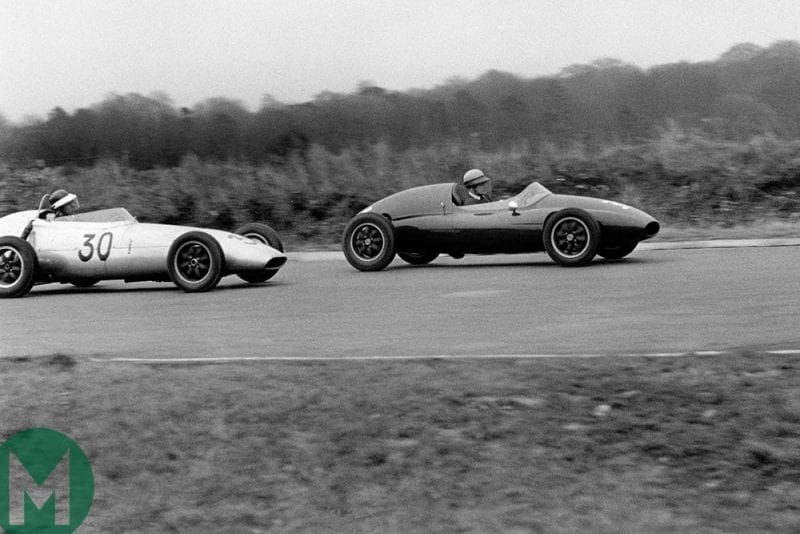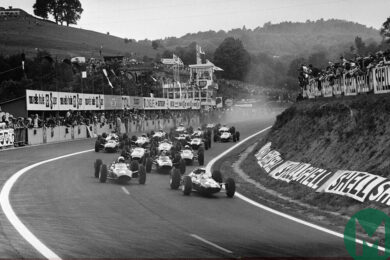His deal was for Junior and Formula 2 – he’d signed with Aston Martin for Formula 1 – and April would see him win at Oulton Park and Goodwood’s Chichester Trophy.
Between times he impressed on F2 debut by setting the fastest Lotus time in practice for the Brussels Grand Prix in the team’s “old hack”. For this he was ‘awarded’ the 18 – “too new to go fast” – originally slated for team leader Innes Ireland. Its Climax ‘four’ vented within a half-dozen laps.
The month ended with a dip at Aintree, Clark spinning from the Junior lead at the last corner because of a stuck throttle and being required to hand his car to Ireland during the F2 ‘200’.
May was a blip, too.
Although Clark won the Junior support to the International Trophy at Silverstone, his “terrible twins” team-mate Trevor Taylor had been leading comfortably when his engine overheated just before half-distance. And at the Monaco GP support an HT lead came adrift when Clark was miles in front.
“Are you on the same lap?” mouthed Clark. The steely look was all the answer he needed.
He would make his F1 debut the following weekend nevertheless.
Aston Martin’s GP project had long been too little, too late and the 1960 Dutch GP was no different. Just one of its front-engine DBR4s was ready for Roy Salvadori to race – and even that would be withdrawn because of a dispute over start money.
Lotus boss Colin Chapman seized the opportunity to put the surplus Clark in his third car: he was battling BRM’s Graham Hill for fourth when the 18’s transmission failed.
A fortnight later he finished fifth in the Belgian GP – yet couldn’t have cared less. Not only had he swerved around the “rag doll” that was the mortally injured Chris Bristow but also team-mate Stacey had been killed in a freak accident.
Not for the first time at Spa, Clark questioned his motives.
Third place at Le Mans – sharing Border Reivers’ Aston Martin DBR1 with Salvadori – and fifth in the French GP at Reims lightened his mood. Clark now felt he belonged – more so than he had imagined possible – and was beginning to understand the depth of his gift.
This almost caught him out at the Solituderennen in late July. Slowing to allow Taylor to close in the closing stages, he encountered an interloper: Count Stephen Ouvaroff in Inter Auto Corse’s Lotus 18.
“Are you on the same lap?” mouthed Clark. The steely look of the Russo-Aussie was all the answer he needed.
Taylor wondered what the fuss was about when Clark tore off in fruitful pursuit – and would be surprised to discover that he had finished third rather than second.
Clark’s F2 South German GP at the same meeting saw him start from pole and lead until a misfire caused by a leaking head gasket and resulting in a stop for water plunged him to an eventual eighth.



